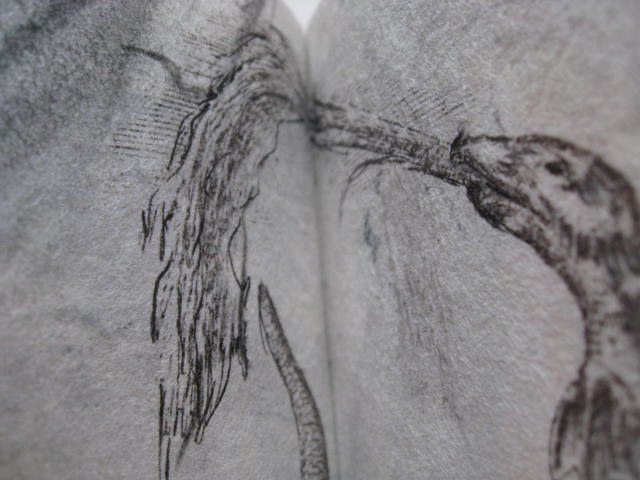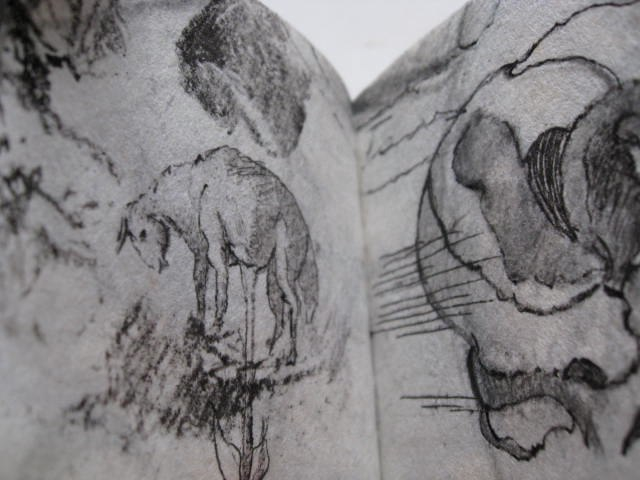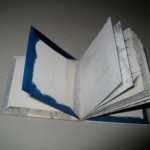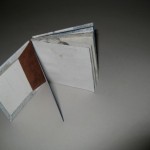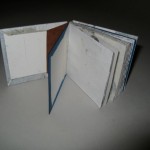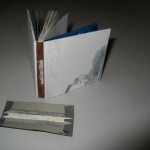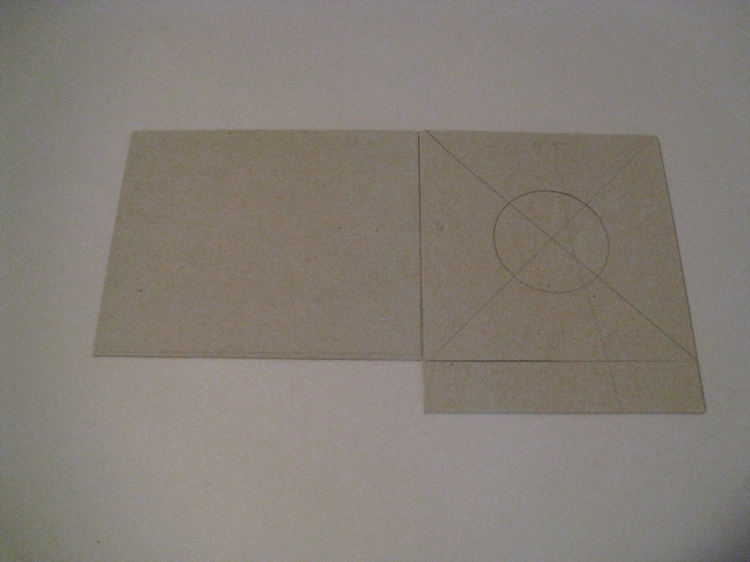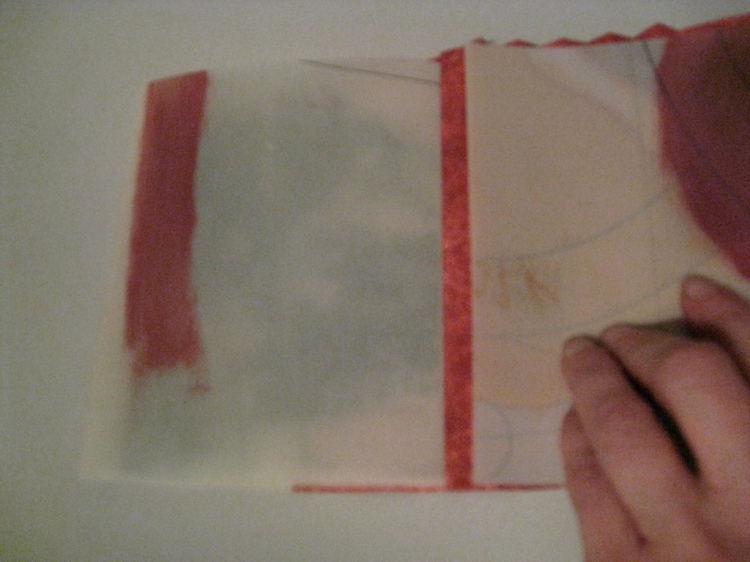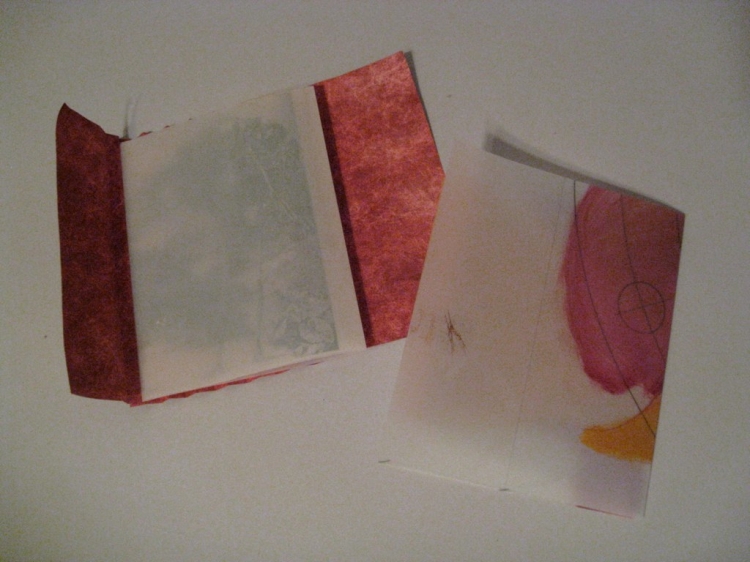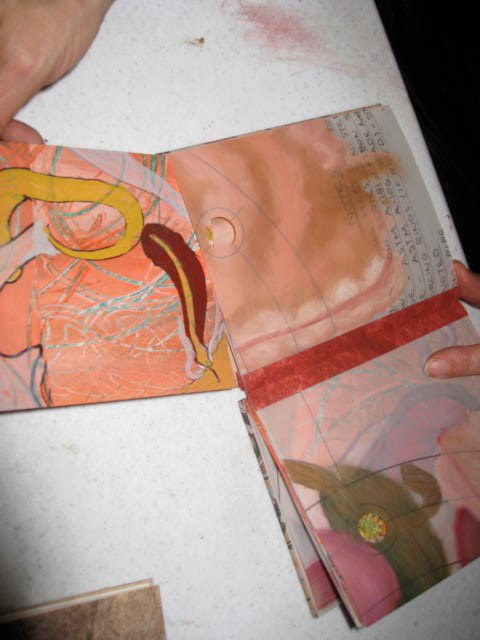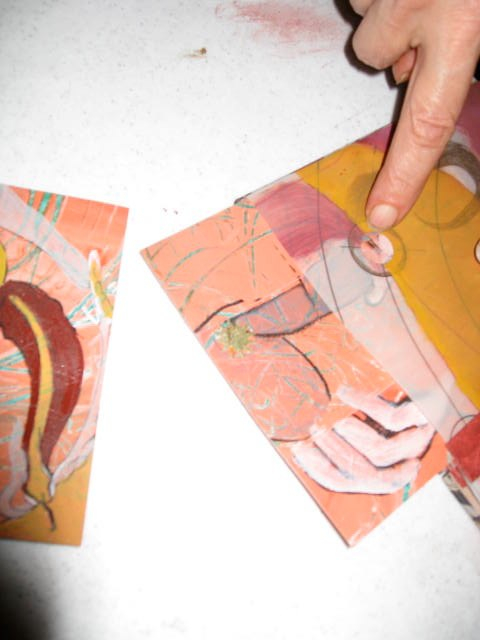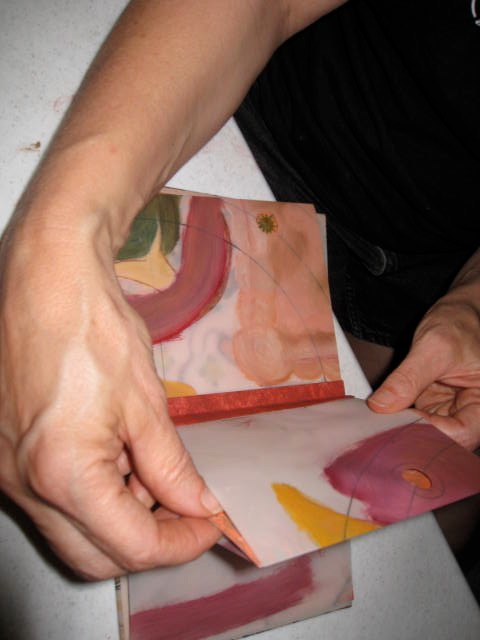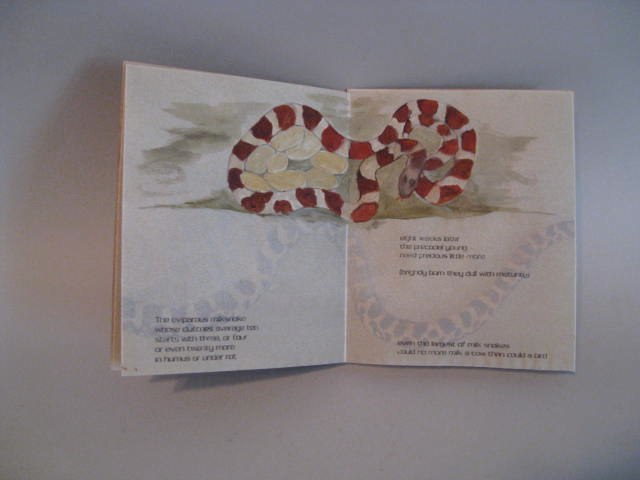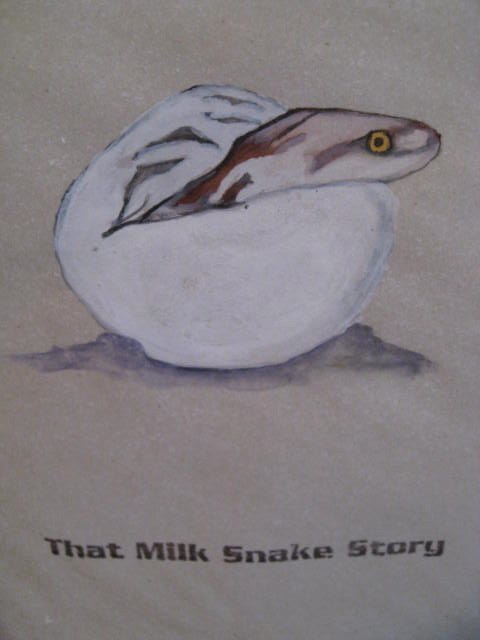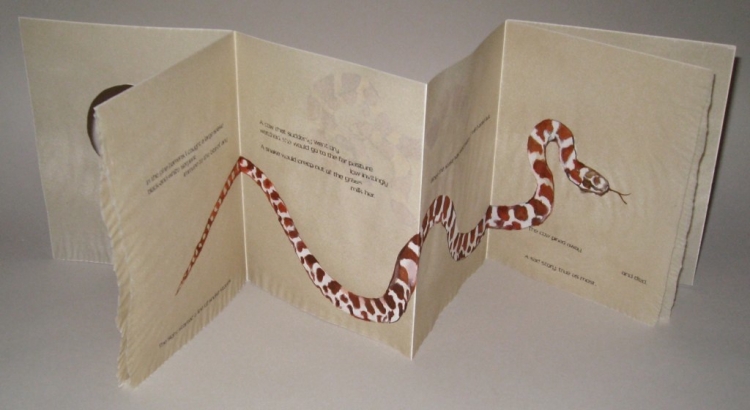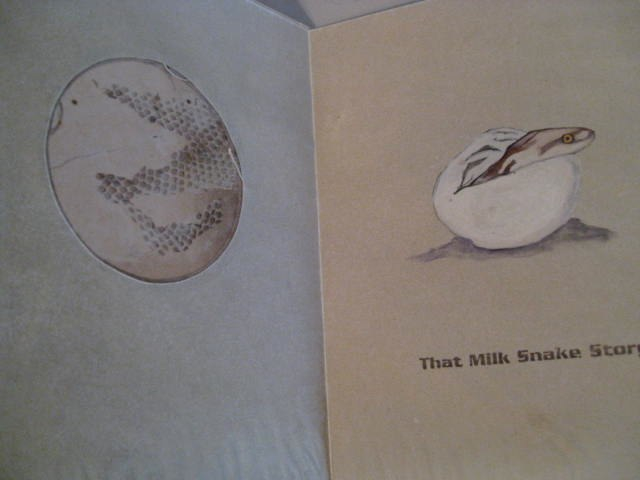A couple weeks ago I got my hair cut at a small salon in Grand County, Colorado. On impulse i asked the owner if she would save me the hair clippings for a few days, which she did. So I thought I’d make a book called Grand Hair. Instead I made a book called Hair 2001.
Materials: Hair, obviously. Laseretched plexiglass, waxed Cocobolo wood, linen twine, copper foil, mica. Leftover shapes of copper leaf:
the last edition book, Burning Me Open, uses shapes of copper leaf applied with PMA to plexiglass. I mis-calculated and for every book an extra shape was cut out. I saved those extra shapes – eighteen 3×1 inch shapes of copper leaf all ready to put into a plexiglass page sandwich. Now what . . .

I decided to combine these two elements, copper foil & hair. Why? Copper is so beautiful and easy to work with. Hair is so creepy but tantalizing. A couple of years ago I saw a piece by Mia Semingson called Memorabilia” – a fixed lid of clear plexiglass covers a box stuffed with her own hair; the box then case bound into a cover, the sides of the box covered with suede. This book of mine is quite different, but the thing Mia’s work inspired is the creation of a queasy feeling that comes with handling a box of human hair, even when the actual tactile experience is that of touching a very different feeling material – plexiglass. So it is the thought of touching all that hair that is disturbing. On a strictly visual level, the hair in Memorobilia, made of countless layers of rich protein strands, is interesting and worthy of lengthy appaisal. In short, I appreciate both the visual effect and the queasy feeling interacting with her books creates.

The method of assembly and binding I used with the Burning Me Open is a good fit. Using the PMA that is on the copper leaf to hold each of 2 plexiglass pieces together. Pictured right the foil is affixed to one side of the plexiglass. Bits of hair were put onto that surface, the release paper pulled off and the other piece of plexi placed on top. The edges are then taped together with copper foil.

I have had this silly book – The History of Hair . . . An Illustrated Review of Hair Fashions for Men Throughout the Ages – for many years. Published in 1960 it includes a chapter called Look Into My Crystal Ball (The Twentieth Century). The text for my book Hair 2001, is taken directly from that chapter.

Here are some predictions (paraphrased), the authors made for the year 2001:
According to Coiffure Masculine, by 2001 75% of the male population will be wearing wigs.
Not, however, to conceal baldness, but as fashion accessories.
These wigs will not be a camouflage for natural hair.
On the contrary, they will be worn with great personal pride.
Wigs for different occasions will appear on the fashion scene
Wigs for work. Wigs for dancing. Wigs for dress.
It is predicted that by the year 2001, baldness will be obsolete.
These predictions I’ve prefaced with the questions, also paraphrased from the book:
By the year 2001, will a lunar hippie protest by means of a closely-shaved scalp?
A balding Astro flash a pair of false eyebrows to offset a full magnetic wig?
The 6 rigid pages consist of laseretch plexiglass, hair, copper foil and copper tape, bound in a variation of an across the spine coptic style first introduced to me by Keith Smith and found in his book Smith’s Sewing Single Sheets. They are sewn with heavyweight linen twine. The covers are of Cocobolo wood that I get from Bell Forest Products. This is a wood that is too oily to glue well, but for sewn on covers it works very well. Those same oily properties means this wood polishes beautifully. The covers of Hair 2001 are waxed – smooth and silky to the touch.
As an aside, Cocobolo wood also has a strong odor, a very pleasant tangy floral order, sort of like my shampoo. The front cover has a window cut out, into which a sandwich of mica, plexiglass and hair is inset.
I am well pleased with this book. The size (The book measures 3 1/2 x 3 1/4 x 1 5/8 closed) and weight of it feel good in the hands. It is visually enticing and well constructed. The content makes me chuckle.































 I scanned both the negatives and the disintegrating envelopes they were stored in, and printed them via both ink & laserjet. The negatives and prints from the scans are bound wire-edge style.
I scanned both the negatives and the disintegrating envelopes they were stored in, and printed them via both ink & laserjet. The negatives and prints from the scans are bound wire-edge style.









